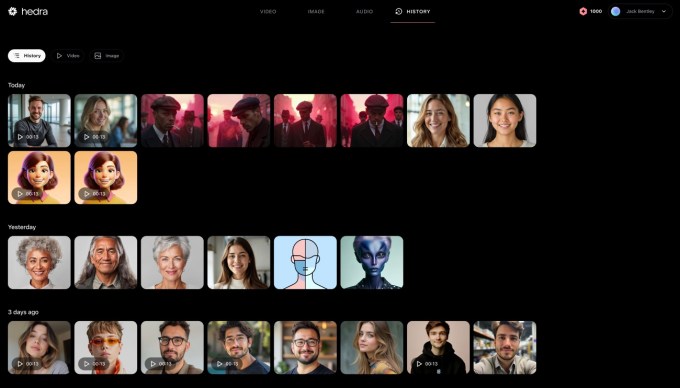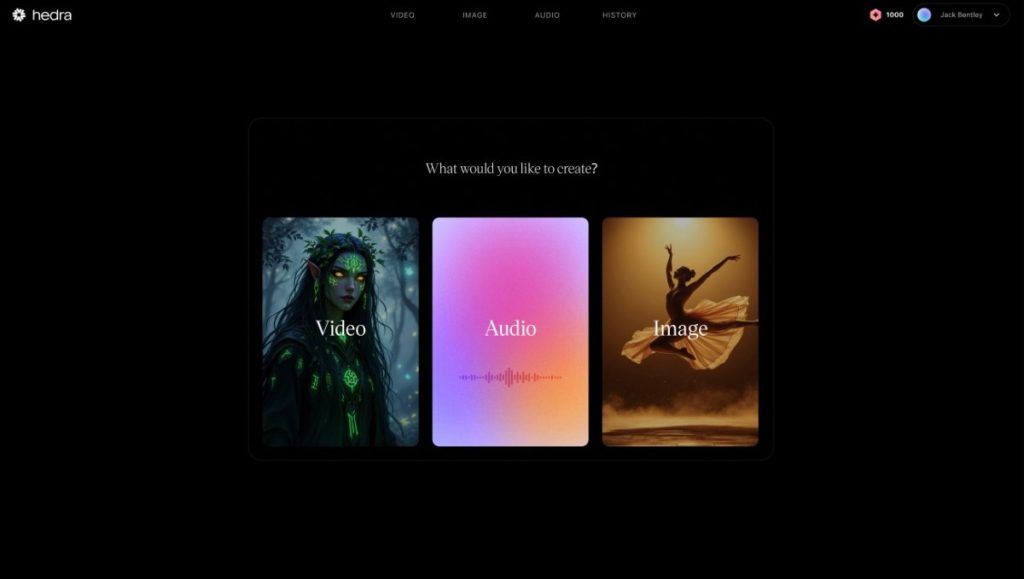People use video generation tools to contribute to an unexpected new viral trend: podcast with speaking children generated by the AI. And one of the companies that helps the artists to do it is Hedra.
The startup, launched in 2023, offers a generation of web -based video and an editing suite powered by its character model 3, which allows users to make videos with a character generated by AI as a focus, as well as transfer styles between images and audio.
This is what people use to make video podcasts like this, in which a dog generated by the AI speaks of what it means to live with a new child at home.
We are not sure of how much Hedra benefited from this trend, but it is receiving a wide attention of investors, however: the company has said that it has collected $ 32 million in a Serie A financing round led by the Infrastructure Fund of AndeSesen Horowitz. His previous investors participate in the A16Z Round and Matt Bornstein will join the Board of Directors.
Michael Litelbach, founder and CEO of the company (in the photo below), told Techcrunch that the startup was inspired by the gap that he noticed between companies such as Syntesia, which allow users to superimpose avatar generated by integrity with presentations and startups such as Runway, which provides video generation tools to create short clips.
“I thought that if we had done something to the intersection between the generation of videos and 3D characters, with long dialogues and better controllability,” he said.
Hedra launched its first video model in June 2024 and quickly attracted the interests of investors, ensuring $ 10 million in seed funding from indexes of initiatives, abstract companies and A16Z Speedrun. At the beginning of this year, Amazon also supported the company through his arm of venture capital, Alexa Fund.
Lichbach observed that the launch of the character-3 model in March was a large flex point (shortly after the company signed its term sheet with A16Z) and is now guiding a lot of users’ growth.
The startup wants to use Fresh Cash to train its next model, which according to this allows better customization, as well as developing technology to allow its characters generated by the integration with users.
The company is now focusing on the attraction of creators and prosumators and has claimed to have received incoming interest also from the business marketing departments.

While the Hedra model focuses on the movement and expression of the character, the app allows you to use other models such as Veo 2 and Kling for the generation of video; Flux, Imagen3, Sana and Ideogram V2 for the generation of images; and Eleicilab and Cartesia audio models for generation or vocal cloning.
Hedra’s competitors include captions (also supported by A16Z), which focuses more on smartphones; Cheehoo with Greycroft back, which works with Hollywood Studios to create animated features; Synthesia and Heygen. Hedra says that the videos generated with its platform have more expressive characters than those made using its competition.
Bornstein of A16Z thinks that as the generation of video generation based on artificial intelligence evolves, we will see more tools focused on characters, motorcycles, voice, editing and the like.
“Artificial intelligence companies can produce incredible clips of simple environments and actions. But they cannot generate significant dialogues or animations. It is not just about making a video, it is a matter of making a story that resonates. This depends largely to the people and characters of history. This is exactly what Hedu is building,” he told Techcrunch in an e -mail declaration.



